So there is a csv file I'm reading where I'm focusing on col3 where the rows have the values of different lengths where initially it was being read as a type str but was fixed using pd.eval.
df = pd.read_csv('datafile.csv', converters={'col3': pd.eval})
row e.g. [0, 100, -200, 300, -150...]
There are many rows of different sizes and I want to calculate the element wise average, where I have followed this solution. I first ran into the Numpy VisibleDeprecationWarning error which I fixed using this. But for the last step of the solution using np.nanmean I'm running into a new error which is
ValueError: The truth value of an array with more than one element is ambiguous. Use a.any() or a.all()
My code looks like this so far:
import pandas as pd
import numpy as np
import itertools
df = pd.read_csv('datafile.csv', converters={'col3': pd.eval})
datafile = df[(df['col1'] == 'Red') & (df['col2'] == Name) & ((df['col4'] == 'EX') | (df['col5'] == 'EX'))]
np.warnings.filterwarnings('ignore', category=np.VisibleDeprecationWarning)
ar = np.array(list(itertools.zip_longest(df['col3'], fillvalue=np.nan)))
print(ar)
np.nanmean(ar,axis=1)
And the error is pointing towards the last line

The error I can see if pointing towards the arrays being of type object but I'm not sure how to fix it.
